QE2: The 50-year journey of a British style icon
- Published
QE2 launch remembered
The QE2, which was launched 50 years ago, was a British "style icon" that became one of the most famous liners in the world - but it also marked the end of generations of large passenger ships being produced on the Clyde.
The marketing for the new liner made bold claims about propelling cruise liners two decades into future.
Adverts from the time proclaimed: "The only thing QE2 has in common with other ships is that she floats."
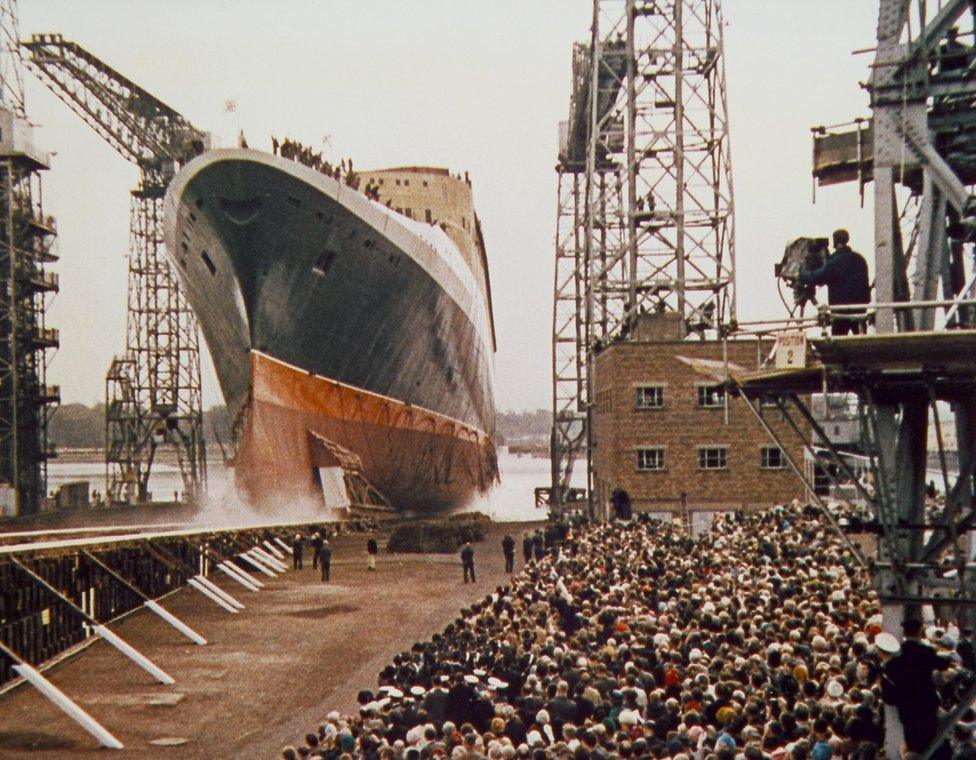
The QE2 was launched by the Queen at John Brown's ship yard in Clydebank in September 1967

The QE2 enters the Firth of Clyde past Cumbrae Elbow lighthouse for the final time in October 2008
After early teething problems, the liner lived up to the hype, serving as shipping company Cunard's flagship for 35 years and becoming a by-word for luxury and elegance.
The famous ship also played a crucial role in the Falklands War when it was pressed into action as a troop ship.
But despite its success, the shipyards of the upper Clyde never again produced a passenger ship of its scale, as other countries around the world cashed in on the boom in cruise liners.

QE2 - in numbers
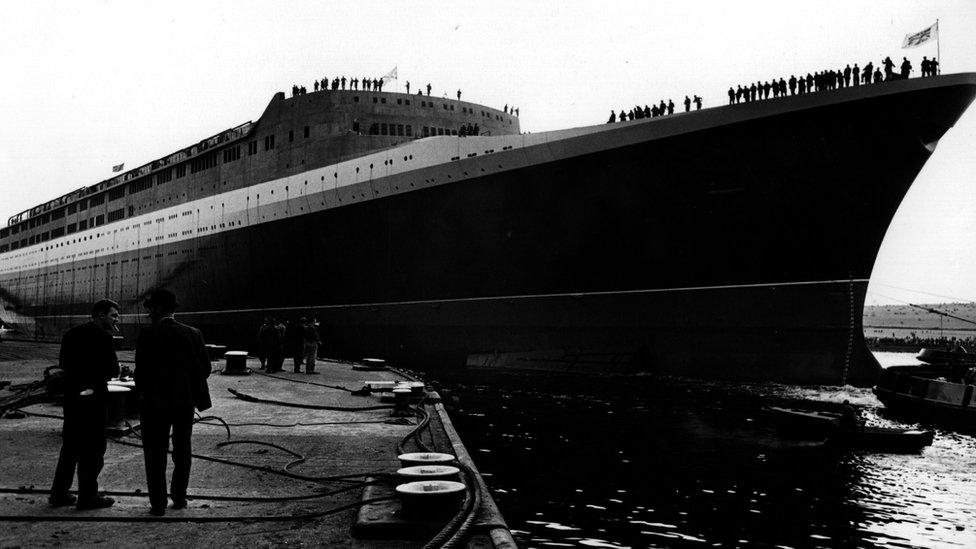
The QE2 was built at the Upper Clyde Shipbuilding yard
963ft (293m) long
65,863 gross register tonnage
1,892 passengers and 1,040 crew
£29m cost to build (approx £490m in today's money)
Five restaurants and two cafes, three swimming pools, a 481-seat cinema, a hospital and a casino
Almost six million nautical miles sailed
2.5 million passengers in total
More than 800 transatlantic crossings completed

'I name this ship'
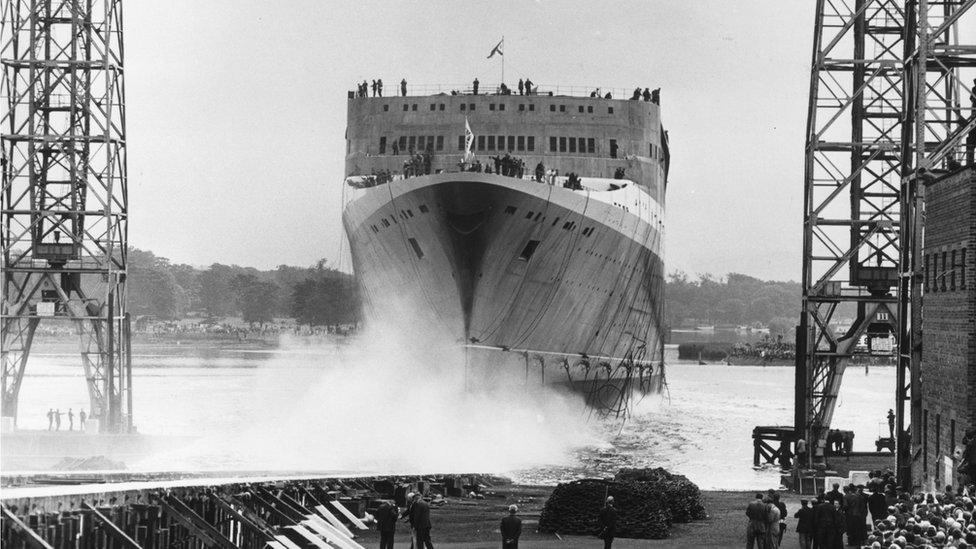
The QE2 taking to the water at Clydebank after being named by the Queen on 20 September 1967
More than 30,000 people lined the streets of Clydebank on 20 September 1967 as the Queen and Prince Philip made their way to the launch at John Brown's shipyard.
The ship was known to the yard as No 736 and to the Cunard as Q4.
It was not until the Queen spoke that people discovered what the new liner was to be called.
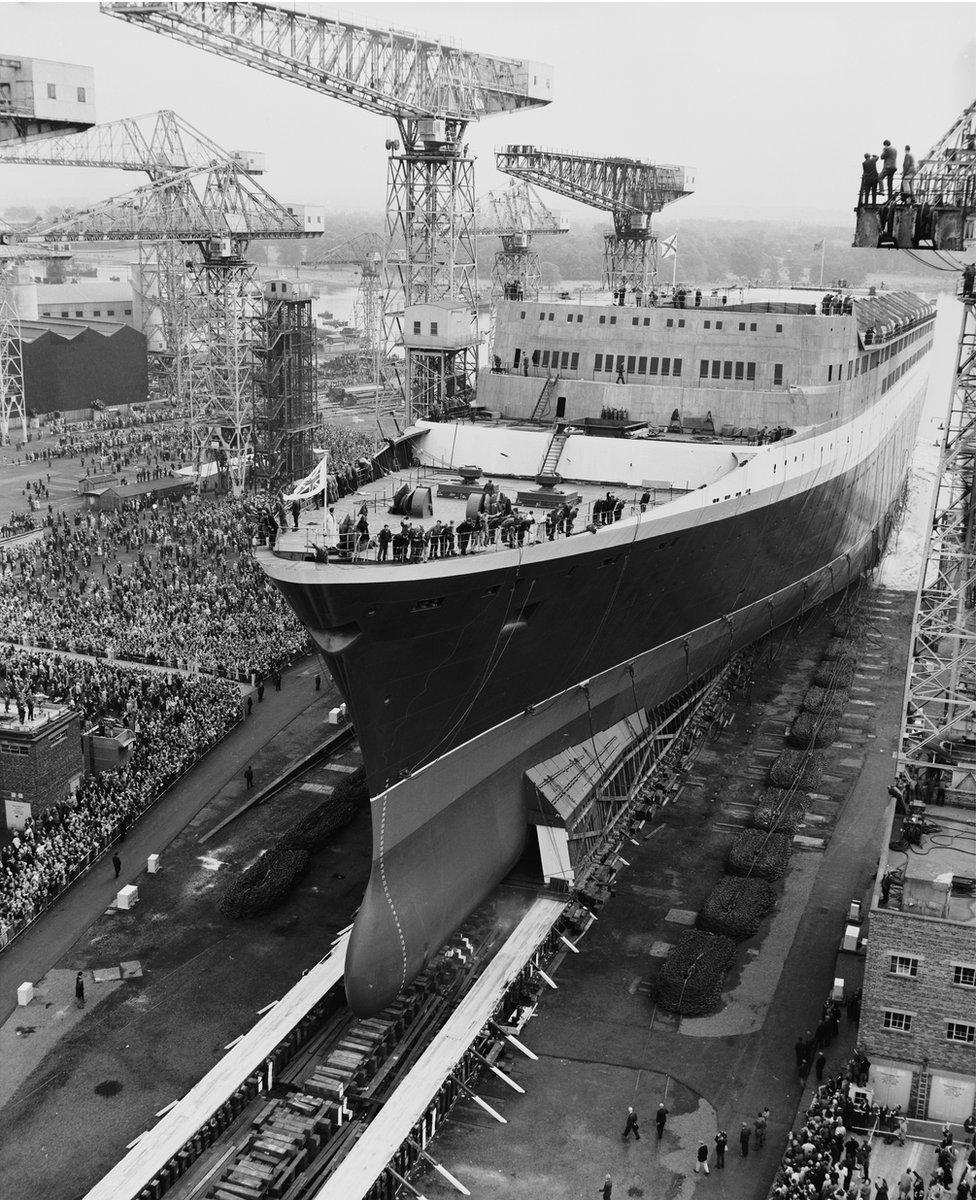
Thousands turned out at the shipyard in Clydebank as the QE2 was launched
She named the ship "Queen Elizabeth the Second" but that caused Cunard a headache as she was the first Elizabeth to rule over Scotland.
In order not to upset the nation that built her, they changed the name to QE2, using the Arabic numeral "2" instead of the Roman "II" the Queen uses.
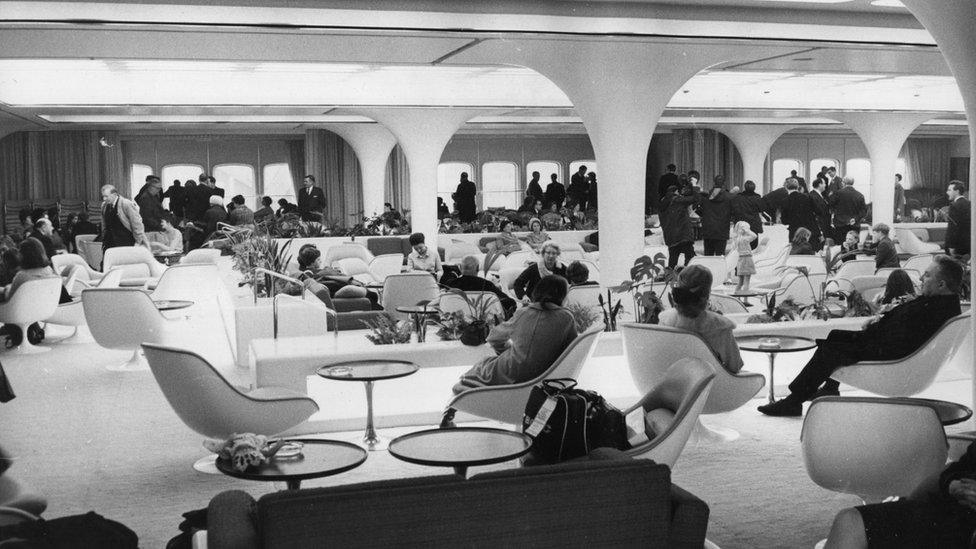
The interior of the "Queen's Room" on the QE2
Peter Kemp, who was a 19-year-old apprentice at the time, told BBC Scotland: "The Queen announced the name and then there was a long pause.
"It seemed a long time before the ship actually moved.
"Somebody cried out 'give it a shove'.
"One of the gaffers with a bowler hat jumped up and gave it a kiddy-on shove and then the thing moved off down the river."
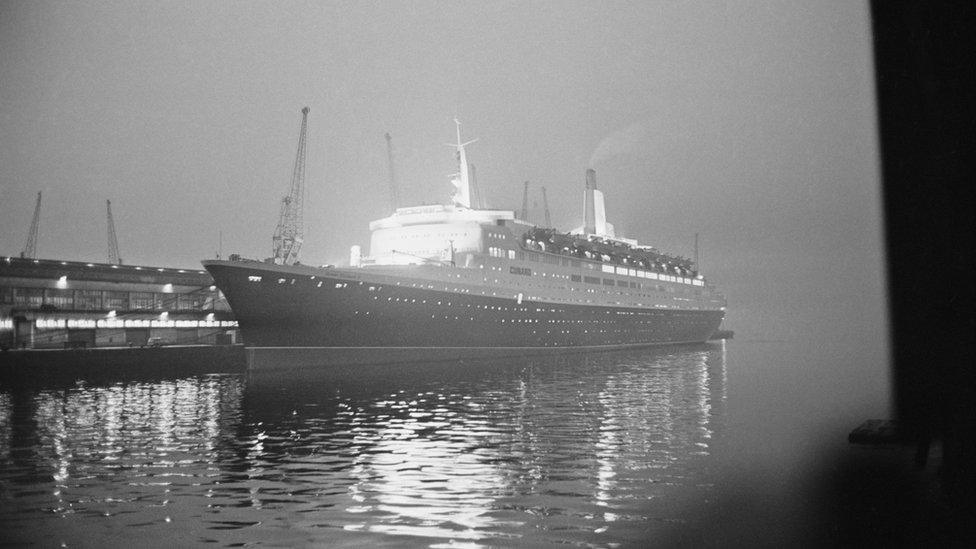
The QE2 at night in 1969
Mr Kemp says: "The chains were rattling and the dust was flying about and everything. It was an amazing sight."
Shipyard history expert and author Ian Johnston says: "It is such a definitive moment when a ship takes to the sea for the very first time, to see this mass of steel sliding into the river, right here on the Clyde and all the noises and atmospherics that go with it, the clouds of dust that are thrown up, just the sheer bulk of something of the scale of the QE2 going into the river.
"It was just a stunning, moving experience."

QE2 - Timeline

The QE2 moored alongside Southampton's Ocean terminal in 1969
1967 - Launched from John Brown's yard in Clydebank on 20 September
1969 - The QE2 made its maiden voyage to New York on 2 May
1971 - The liner rescued passengers from another ship, the Antilles, after it ran aground
1972 - While travelling from New York to Southampton, the ship was the subject of a bomb threat mid-Atlantic. An SAS-led team parachuted into the water next to the ship but no bomb was found
1982 - The QE2 was requisitioned as a troop carrier for the Falklands War
1987 - The ship was converted from steam power to diesel electric
2004 - After 35 years, the QE2's reign as flagship of the Cunard fleet drew to a close when the title was handed over to the French-built sister ship, Queen Mary 2
2007 - Cunard announced it had sold the QE2 to the Dubai government investment company, Isthimar, for £50m
2008 - After a trip around the UK, including a final trip to the Clyde, the ship sailed to Dubai on 11 November 2008
2012 - Plans for a luxury hotel on the QE2 are announced but they have never proceeded
2017 - The QE2 remains moored in Dubai with no decision on its future

Teething problems
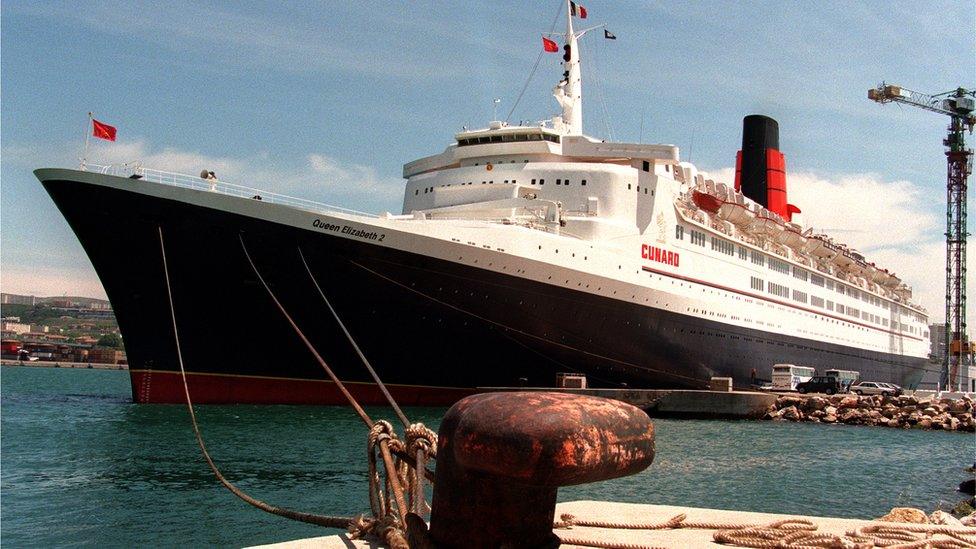
The QE2 anchored in the harbour at Marseille for a stopover in 1996
Despite the liner's rise to fame, its early days were dogged by teething problems.
Soon after being launched, its engines were beset with problems.

The QE2 arrives in Sydney Harbour on its final voyage to Australia in 2008
Further hitches meant its maiden voyage from Southampton to New York in January 1969 had to be cancelled and it did not make the journey until four months later.
Mr Johnston said early headlines such as "ship of shame" were harsh and there was nothing fundamentally wrong with the liner, as it went on to prove over the next four decades.

The QE2 passes the Isle of Arran on its final trip around the UK in 2008
The historian says: "She became a favourite with cruising people all over the world. Her reputation was well-earned. She was an unusual and stylish ship, very handsome and with the best of British design.
"She also had a long history of service during which her reputation grew."

The QE2 in Sydney, shortly before it was taken out of service
The liner also served the UK in a different way during the Falklands War in 1982.
The QE2 had its fittings stripped out and three helicopter pads built.
The lounges were turned into dormitories and the liner carried more than 3,000 troops to the South Atlantic.

Style icon
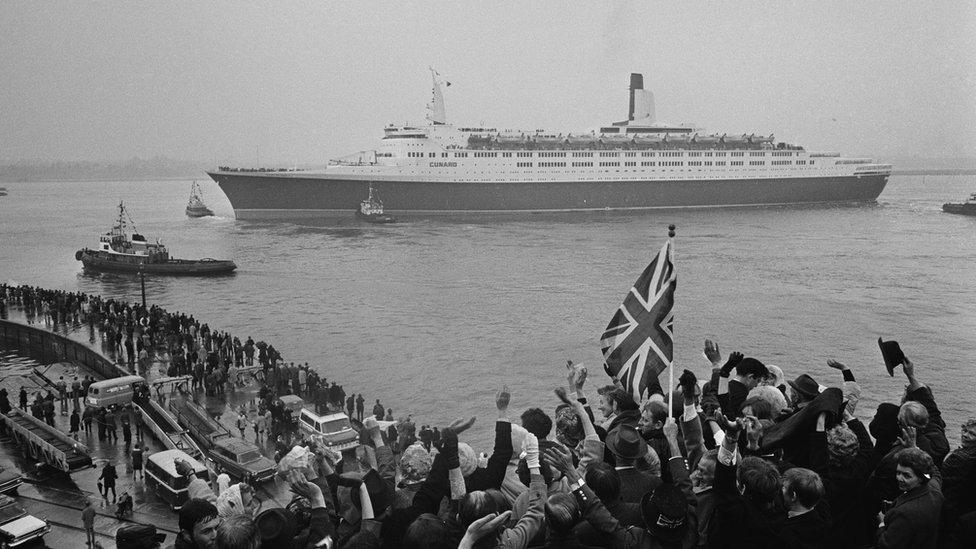
Crowds wave from the quayside as the QE2 sets out on its maiden voyage from Southampton to New York on 2 May 1969
After almost 70 years, the QE2 was the last of the great Cunard liners to be launched on the Clyde.
Ian Johnston says the liner was a "style icon".
He told BBC Scotland the ship was part of the British design renaissance of the Sixties.
In the words of Prime Minister Harold Wilson, it was forged in the "white heat of technology".
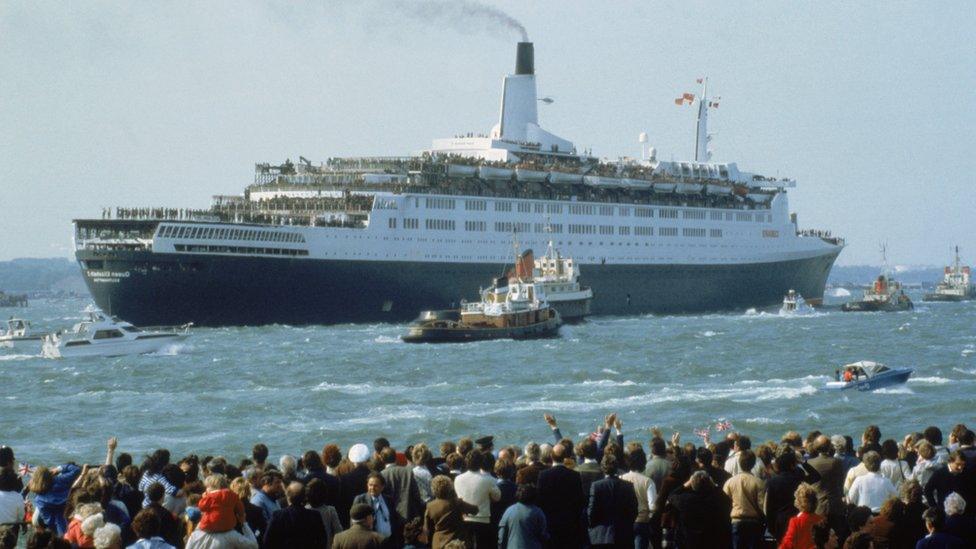
The QE2 carrying British troops from Southampton during the Falklands War in 1982
"People came to realise she was a leader in design terms, bringing together the best of British design excellence," said Mr Johnston.
"She embodied what was the best of British at the time and she stood the test of time in that respect."
In 35 years of service, the QE2 became a destination rather than a carrier, carrying about 2.5 million passengers including the Queen, Nelson Mandela, Elizabeth Taylor and Richard Burton, and astronaut Buzz Aldrin.

Last great liner
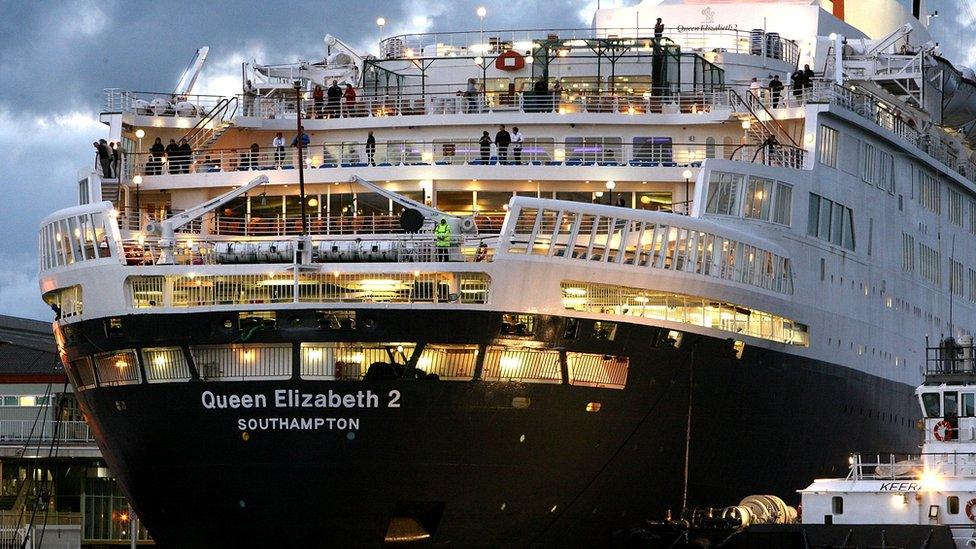
The QE2 in Melbourne in 2008
Building the most famous ship in the world should have secured the future for John Brown's, but the shipyard was in trouble.
Partly to keep its skilled workforce together before the Q4 order came in, it had built the Swedish liner Kungsholm and there was no profit from the new Cunarder.
John Brown's put in a tender that barely covered costs, just to make sure it got the contract.
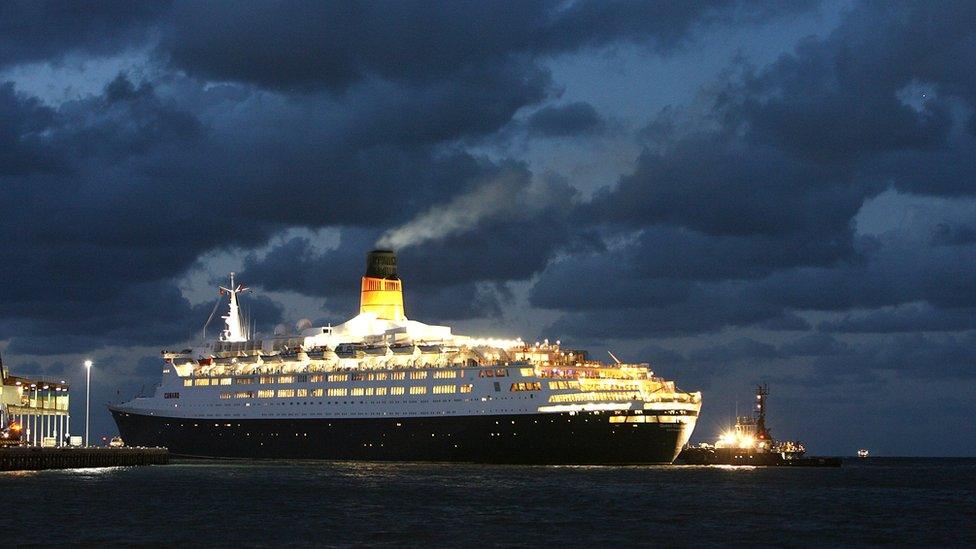
There were also fears at the time that the QE2 itself was already obsolete in the new age of transatlantic jet travel.
Ian Johnston says: "She was designed to go across the Atlantic in the heavy swell at speed but principally she was designed to be a cruising ship and in that sense she was reading the future."
Mr Johnston says that in 1967 no-one foresaw the boom in cruise ships which has meant more are being built now that at any other point in history.
He says: "It is ironic that the Clyde yards that produced this beautiful ship is no longer in the market to build these liners.
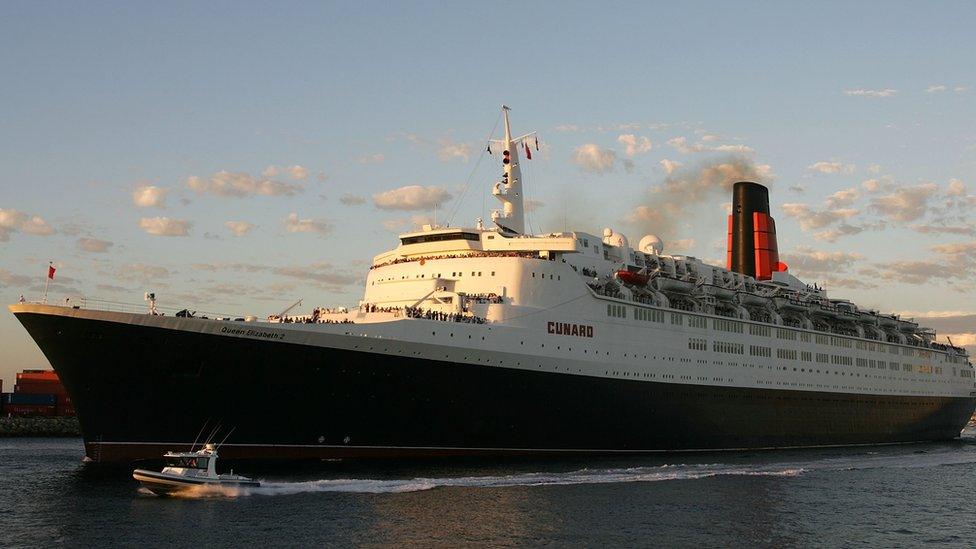
"The sad thing is that none of the great shipbuilders of the Clyde survived into the era when they could have capitalised on the boom because that was their expertise, fitting out luxury ships and passengers ships was one of the things they did so well on the Clyde.
"It would have been very nice to think we could have been building some of these great cruise liners that are being built in Germany and Italy and Finland."
As for the QE2 itself, it is currently berthed in Dubai.
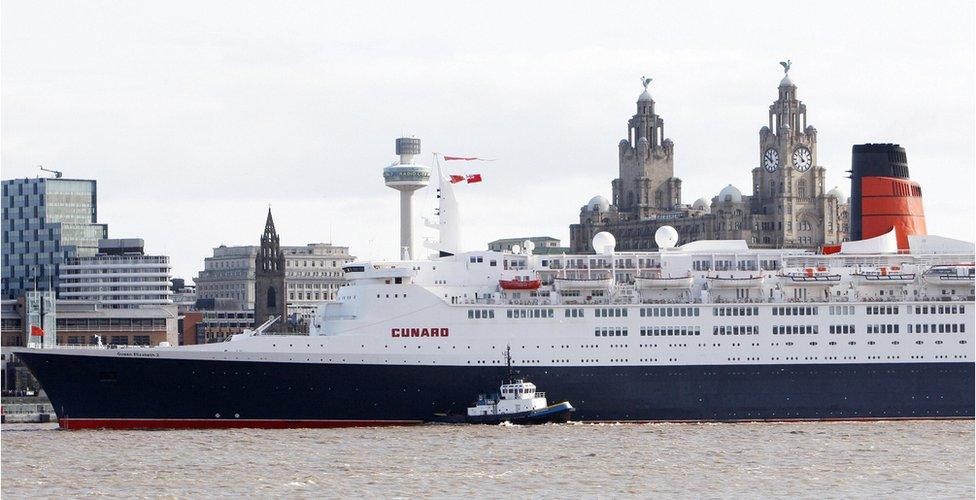
The QE2 in Liverpool during its farewell tour of the UK in 2008
It went there in 2008 after it was sold to an investment company that wanted to turn it into a luxury hotel.
Those plans have been on hold and the ship remains in Dubai awaiting its fate.
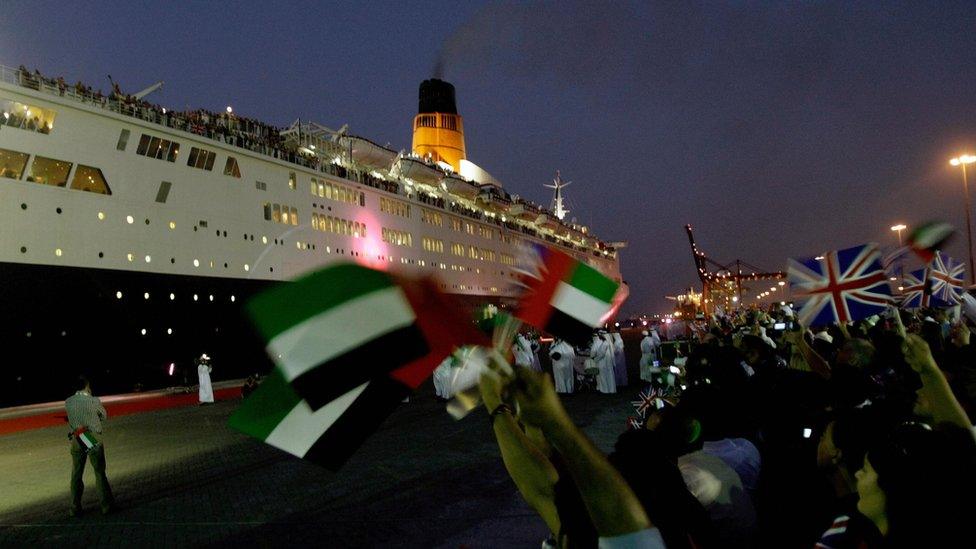
Residents of Dubai wave the British and Emirati flags as the famous cruise liner arrives at its final destination
For Peter Kemp there is sadness that the ship he worked on as an apprentice is no longer in use but he says that is often the way.
"If, like me, you spend your life working with ships, they come to the end of their working life," he says.
"It's sad to say but they go to the scrappers.
"Lots of ships don't have the longevity of the QE2.
"It's a shame it's been left lying out in Dubai. It would be nice to see it brought back up the Clyde."